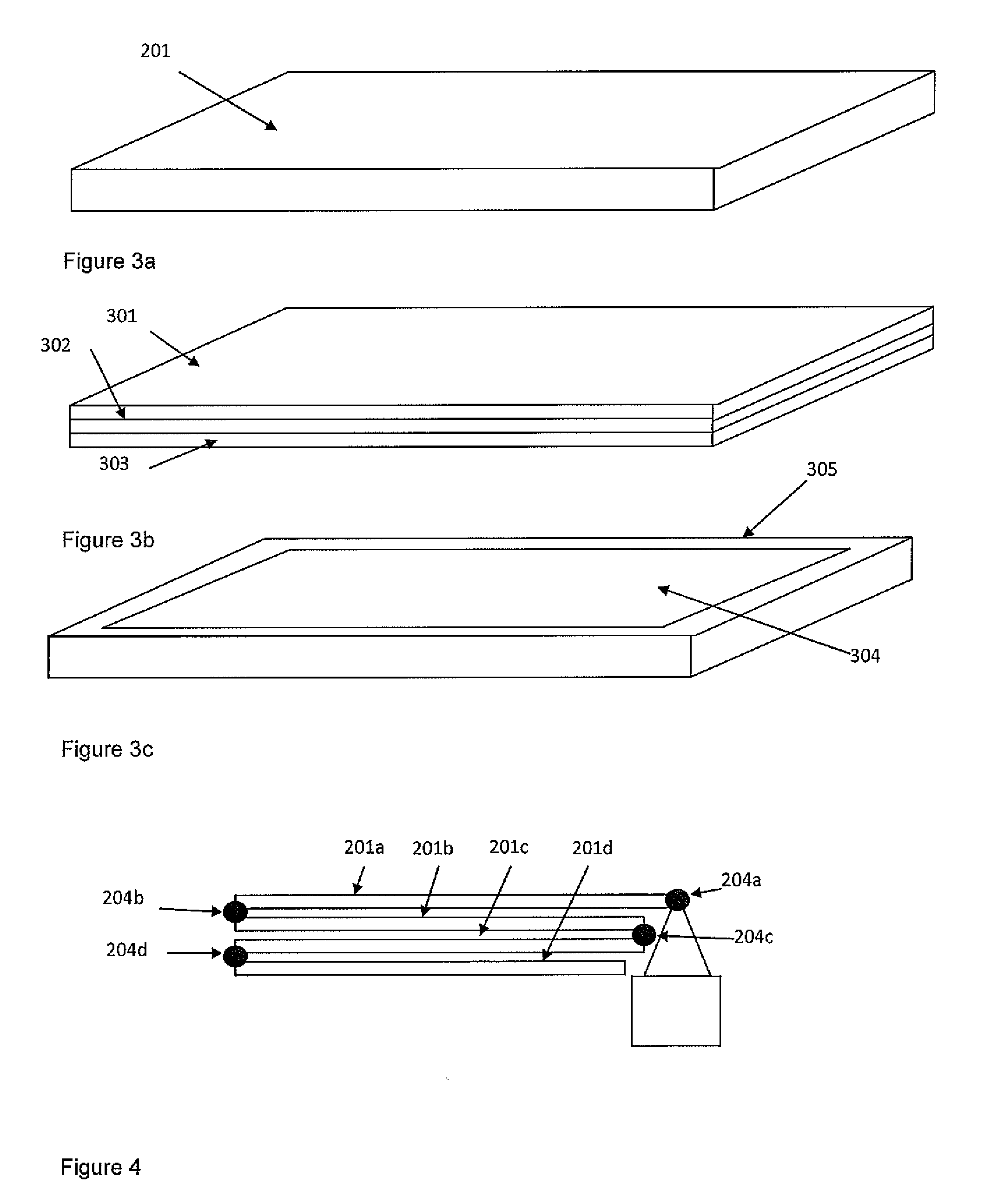Apparatus for spacecraft
a spacecraft and apparatus technology, applied in the field of spacecraft protection, can solve the problems of small population of trackable objects in earth orbit (including debris), rapid tumble of satellites, and rare dramatic events, and achieve the effect of improving spacecra
- Summary
- Abstract
- Description
- Claims
- Application Information
AI Technical Summary
Benefits of technology
Problems solved by technology
Method used
Image
Examples
Embodiment Construction
[0068]The teachings herein provide a deployable multi-functional device that can provide spacecraft with a combination of the following functions: i) shielding against impacts from space debris and meteoroids, ii) in-situ detection of space debris and meteoroid impacts, iii) end-of-life deorbiting for spacecraft in LEO, iv) removal of small size debris from the space environment by acting as a ‘sweeper’.
[0069]The shielding configuration provides an order of magnitude improvement in impact protection for a typical LEO spacecraft in a cost-effective manner. Impact detectors provide data for monitoring of the space debris environment, thus increasing knowledge for debris environment modellers, providing real-time information for spacecraft operators, and raising awareness of the problem of debris impacts. The ability to increase the surface area of the spacecraft assists end of life spacecraft deorbiting in LEO, thus providing benefits such as propellant-saving, increased mission reven...
PUM
 Login to View More
Login to View More Abstract
Description
Claims
Application Information
 Login to View More
Login to View More - R&D
- Intellectual Property
- Life Sciences
- Materials
- Tech Scout
- Unparalleled Data Quality
- Higher Quality Content
- 60% Fewer Hallucinations
Browse by: Latest US Patents, China's latest patents, Technical Efficacy Thesaurus, Application Domain, Technology Topic, Popular Technical Reports.
© 2025 PatSnap. All rights reserved.Legal|Privacy policy|Modern Slavery Act Transparency Statement|Sitemap|About US| Contact US: help@patsnap.com



